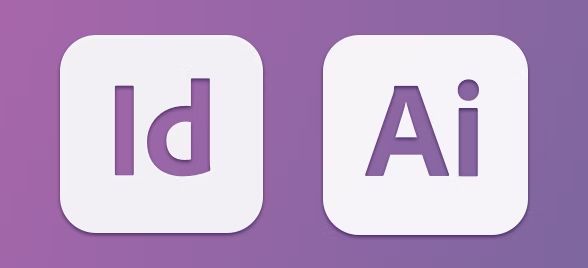The Complete Guide to Making a Successful Architecture Portfolio

The Architecture portfolio is an pivotal document that Architects use to showcase their work. It is an essential part of communicating and connecting with potential clients and colleagues. However, with better tools and increased competition nowadays due to the internet, Architects need to work even harder to stand out with their portfolio. The purpose of this article is to provide readers with the steps for making a good architectural design portfolio. We will go through the process of preparing your work for an architectural portfolio and show you how to make a great architectural design portfolio.
This article has three sections to make sure you can plan, create and present in a way to get your skills recognized:
1. Why Your Portfolio Needs To Stand Out
2. How to Plan Your Architectural Portfolio
3. How To Develop Your Portfolio
4. How To Prepare Your Portfolio Presentation
And check out a great InDesign Course from our friends @ ThinkParametric (here) when done, to test out your new skills.
Why Your Portfolio Needs To Stand Out
The last thing you want is for your portfolio to be overlooked or not taken seriously because it doesn’t meet the expectations of whoever is reviewing it. That’s why you need to make sure that your portfolio stands out from the crowd by showing off your work in a way that makes it clear what you can offer.
How to Plan Your Architectural Portfolio
- Identify Your Audience
- Every portfolio reader fits into an audience. Is the audience a community leader? Is it a thought leader? Is the audience a fan of sustainability?
- Whether a school or a potential firm, every audience has interests and key words that should direct your choices of project and descriptions to prove you are knowledgeable to provide results in that area.
- Select The Appropriate Format
- Nowadays, there are several ways to create and distribute portfolios. You can show then on a website, in a PDF, in a printed booklet. No matter the final media, you will need to put adequate planning so that the execution will serve your presentation. If you are showing online, be aware the limitations of color, and potential screen size. If people may view on their desktop, it would need to look different than if purely for phone viewing. If you are printing out the portfolio with binding – the binding should not cover words or key graphics. Put some time into perfect your format.
- Include Your Best Work
- Everyone loves their own work, but it’s critical when presenting your work, that you put a high criteria. And If you don’t have many projects, you will need to find the best images, and possibly make some edits for a better presentation. A key sign of good work is clarity of idea and execution. With that clarity visible in both image and description, you can be sure the work will be impressing the viewer with the right message.
- Include Case Studies + Academic Work
- Lots more Architects are attending graduate school these days, and doing some great research work, and these projects are interesting to interviewers and review teams. Presenting case studies and academic work will require that you narrow down clear graphics and explanations so not to go too far over the head with concepts.
- Identify Your Role
- We have all been part of awesome projects in good roles, but when you merely show your images, sometimes the credit can seem questionable. That’s why it’s important to put your title ie designer or project Architect, and role – develop design, develop rendering, etc. While you may have done many roles, this is opportunity and talking point to let your audience know what you did and how it made an impact
- Include A Unique CV/Resume Page
- While the portfolio is not too double as a resume. There is opportunity to put your important credentials, if its’ read before your resume. In this you can also put key accomplishment, connections and skills. This is also often benefitted with a good photo and image that could be from an inspiring project that isn’t your work with attribution of course to give a picture about who you are.
- Simplify The Cover Page
- While you as a designer may have several projects and types of visuals in your back pocket, the cover image is selling a simple vision of you. For that reason, it’s clear to be simple. This could mean one exceptional large render or photograph of work, or it could mean a primary image, with smaller supporting ones. Make sure you’re using good layout principles, and that your title and name are going to fit neatly on page with binding.
- Title Your Images And Describe Projects Well
- There is nothing that can add to a beautiful project more than beautiful description and title for imagery. This description for won commissions and built projects often was used to sell the project, and should be part of your wording. You also can find the most relevant parts of the project to connect with your portfolio audience for a winning theme.

How To Develop Your Portfolio
- Choose Good Software
Adobe InDesign has been an industry leader in designing portfolios for several years. Our course (here) is exceptional, but you also can use Microsoft Word, or other packages. Make sure you know skills to get a quality end product. - Prepare Images In The Proper Folder
Organizing your images in a central location will make sure you won’t be in a mad search for each editing session. - Refine Your Images
Making sure images show enough information in a beautiful way can be time consuming, but it will help you make the best impression with each view. You may even have to re render or photograph. But make sure you have enough time for a quality look. - Use A Template
Lots of templates are available for portfolios. Knowing how to customize can help you really stand out without taking time to make one by yourself. - Place Images And Text Effectively
There should always be a flow in a good portfolio. So outlining will help. But also make sure to play of idea of leading. Templates really help here. - Print Out and Review
Getting the portfolio out of the computer is critical so you can spot errors at once, versus missing one while working. - Finalize And Get Feedback
At the end of the day, as other people will be reviewing your portfolio, it may as well be useful to have some friends check it out beforehand. This will help you get outside opinions and know your strengths. - Update As Needed
This is important if you plan to use your portfolio in future. This is also an important reason to centralize and package your file, so you won’t be missing images later.

How To Prepare Your Portfolio Presentation
After all the hard work, you will need to present your portfolio. Here are some tips to make sure your words accentuate your best images.
- Outline Your Talking Points
Being focused in presenting your portfolio goes a long way. This outline should cover your key projects, skills and skill wins in each project. - Note Issues For Clarification
Every portfolio has confusing elements. If you identify these before, it well help keep the presentation on track. - Present All Key Projects
While you don’t need to present every project, you need to have a set for presenting, and also a fallback if something comes up in the conversation that you can refer back to. Being able to use the portfolio to respond in the interview is a great way to prove your qualification. And if you are lacking a project, you have cue to send that afterwards. - Give Time For Consideration
Audience need to absorb what they see, including have time to make questions. This may be visible while your audience reads, or maybe from their responses. - Maximize The Final Image
The image your portfolio ends on should be a planned and exceptional one. While it may seem a strategy to put your best projects first. There needs to be a pretty good one at the end, and you should use this to sum up your best qualification. - Practice With Colleagues
This is just a friendly way to get your project before eyes that can tell you things that work and don’t. - Memorize Your Projects
While you don’t need to memorize everything, your control over what is in your portfolio speaks to your ability to manage and contribute over new projects. It will help you stay focused and knowledgeable during the final presentation. - Be Confident
Every presentation needs a speaker that is confident to sell the ideas. That will require you believe your work is good and you are an excellent candidate. Make sure to address issues and really find your strengths so that this becomes your moment and best impression.
To get started with a quality course on the Illustrator & InDesign, click below for great a great resource.

